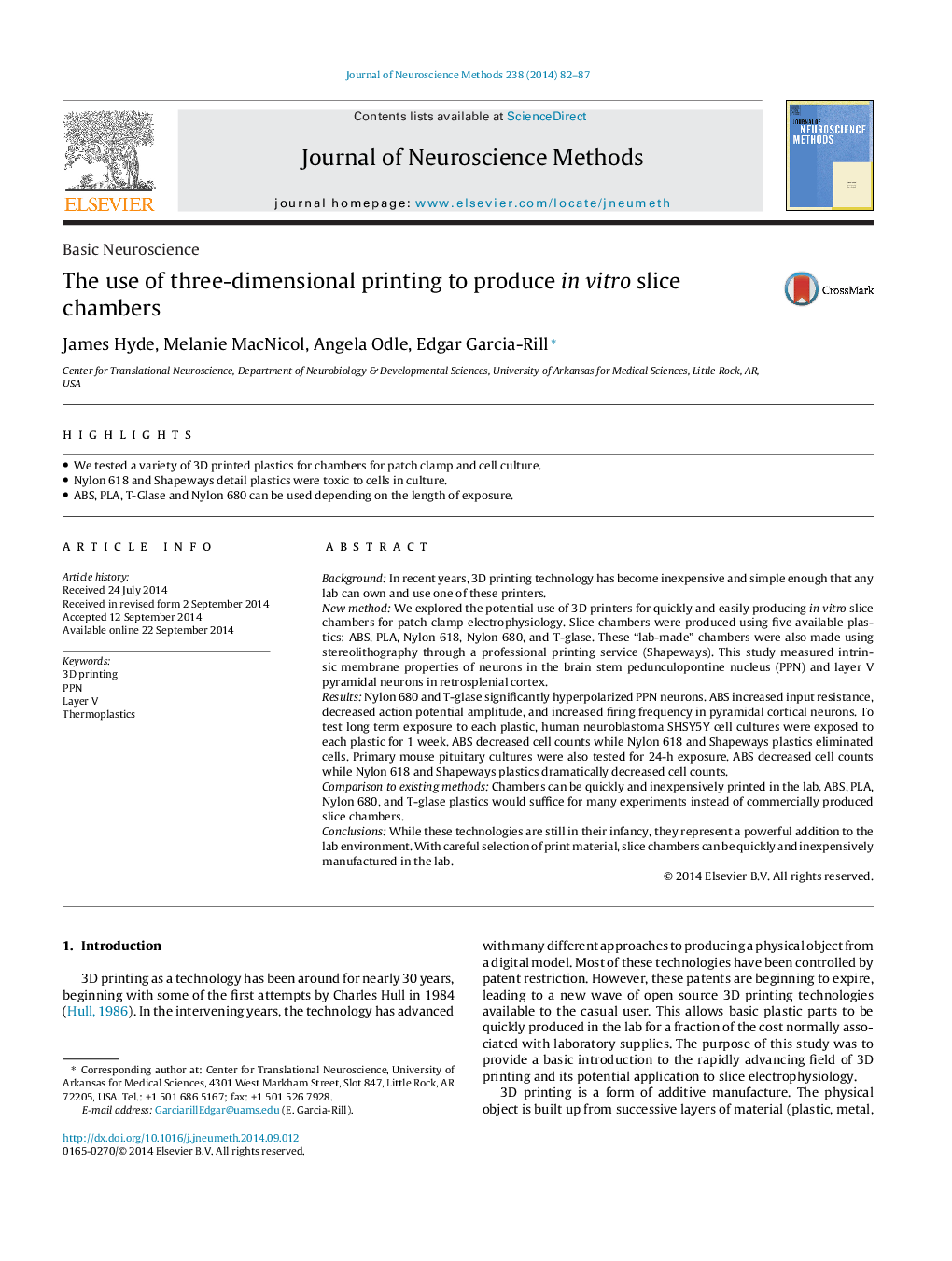| کد مقاله | کد نشریه | سال انتشار | مقاله انگلیسی | نسخه تمام متن |
|---|---|---|---|---|
| 6268450 | 1614631 | 2014 | 6 صفحه PDF | دانلود رایگان |
- We tested a variety of 3D printed plastics for chambers for patch clamp and cell culture.
- Nylon 618 and Shapeways detail plastics were toxic to cells in culture.
- ABS, PLA, T-Glase and Nylon 680 can be used depending on the length of exposure.
BackgroundIn recent years, 3D printing technology has become inexpensive and simple enough that any lab can own and use one of these printers.New methodWe explored the potential use of 3D printers for quickly and easily producing in vitro slice chambers for patch clamp electrophysiology. Slice chambers were produced using five available plastics: ABS, PLA, Nylon 618, Nylon 680, and T-glase. These “lab-made” chambers were also made using stereolithography through a professional printing service (Shapeways). This study measured intrinsic membrane properties of neurons in the brain stem pedunculopontine nucleus (PPN) and layer V pyramidal neurons in retrosplenial cortex.ResultsNylon 680 and T-glase significantly hyperpolarized PPN neurons. ABS increased input resistance, decreased action potential amplitude, and increased firing frequency in pyramidal cortical neurons. To test long term exposure to each plastic, human neuroblastoma SHSY5Y cell cultures were exposed to each plastic for 1 week. ABS decreased cell counts while Nylon 618 and Shapeways plastics eliminated cells. Primary mouse pituitary cultures were also tested for 24-h exposure. ABS decreased cell counts while Nylon 618 and Shapeways plastics dramatically decreased cell counts.Comparison to existing methodsChambers can be quickly and inexpensively printed in the lab. ABS, PLA, Nylon 680, and T-glase plastics would suffice for many experiments instead of commercially produced slice chambers.ConclusionsWhile these technologies are still in their infancy, they represent a powerful addition to the lab environment. With careful selection of print material, slice chambers can be quickly and inexpensively manufactured in the lab.
Journal: Journal of Neuroscience Methods - Volume 238, 30 December 2014, Pages 82-87
